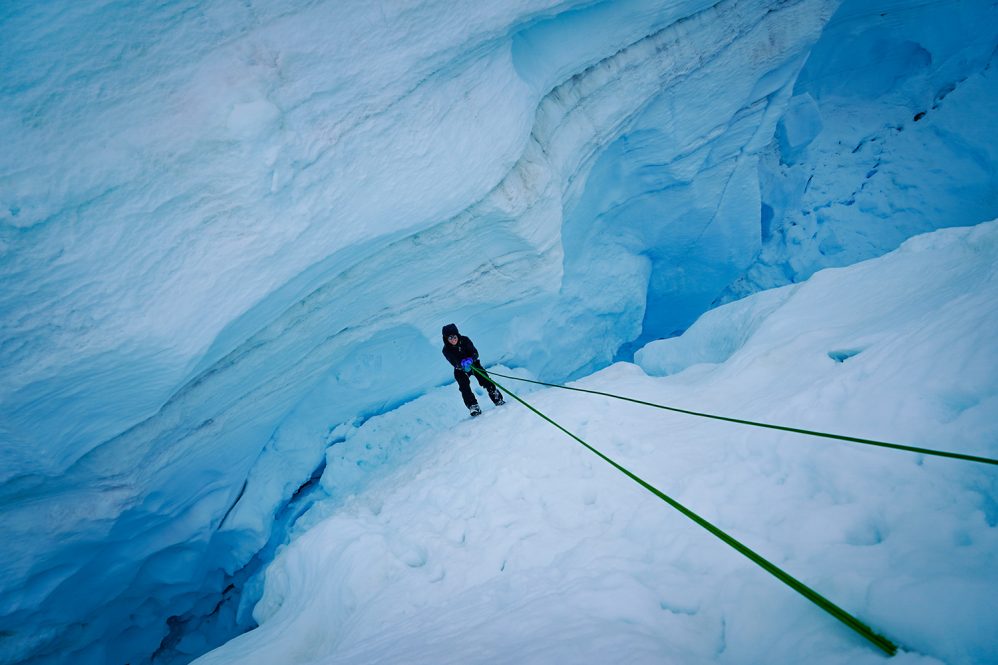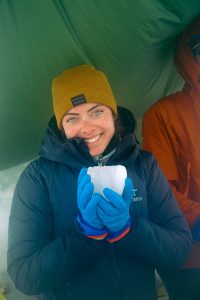
From cross-country skiing to mountain climbing, Caroline Wexler ’24 (CLAS) is no stranger to adventure. This summer, she spent eight weeks traversing 75 miles across Alaska as part of the Juneau Icefield Research Program (JIRP). Hosted by the University of Maine, the academic course brings together students interested in glacier science and field skills training.
Wexler, a junior double majoring in earth science and an individualized major of science communication, is now preparing to present her research at the American Geophysical Union (AGU) Fall Meeting in Chicago. We caught up with her to learn more about her experience.
Tell us a little bit more about JIRP.
We started in Juneau, Alaska and traversed all the way up into Atlin, British Columbia. We were hiking up mountains and skiing. Along the way, we performed remote field work with faculty members from around the world. These faculty members ranged from climate scientists to science communicators to scientists working in industry.
Aside from the science component, we also learned how to navigate through remote and hostile environments. The Juneau Icefield is all glaciers. We learned safety skills in addition to doing research. For instance, we learned how to be on rope teams and communicate with the people around us as we hiked up mountains and skied. As much of an academic program as it is, it’s also a leadership program.
I knew I wanted to get more into snow and ice coring. To get the chance to do that and have a hands-on research experience was really an aha moment for me. I thought to myself, I know I want to do this. This is my career.
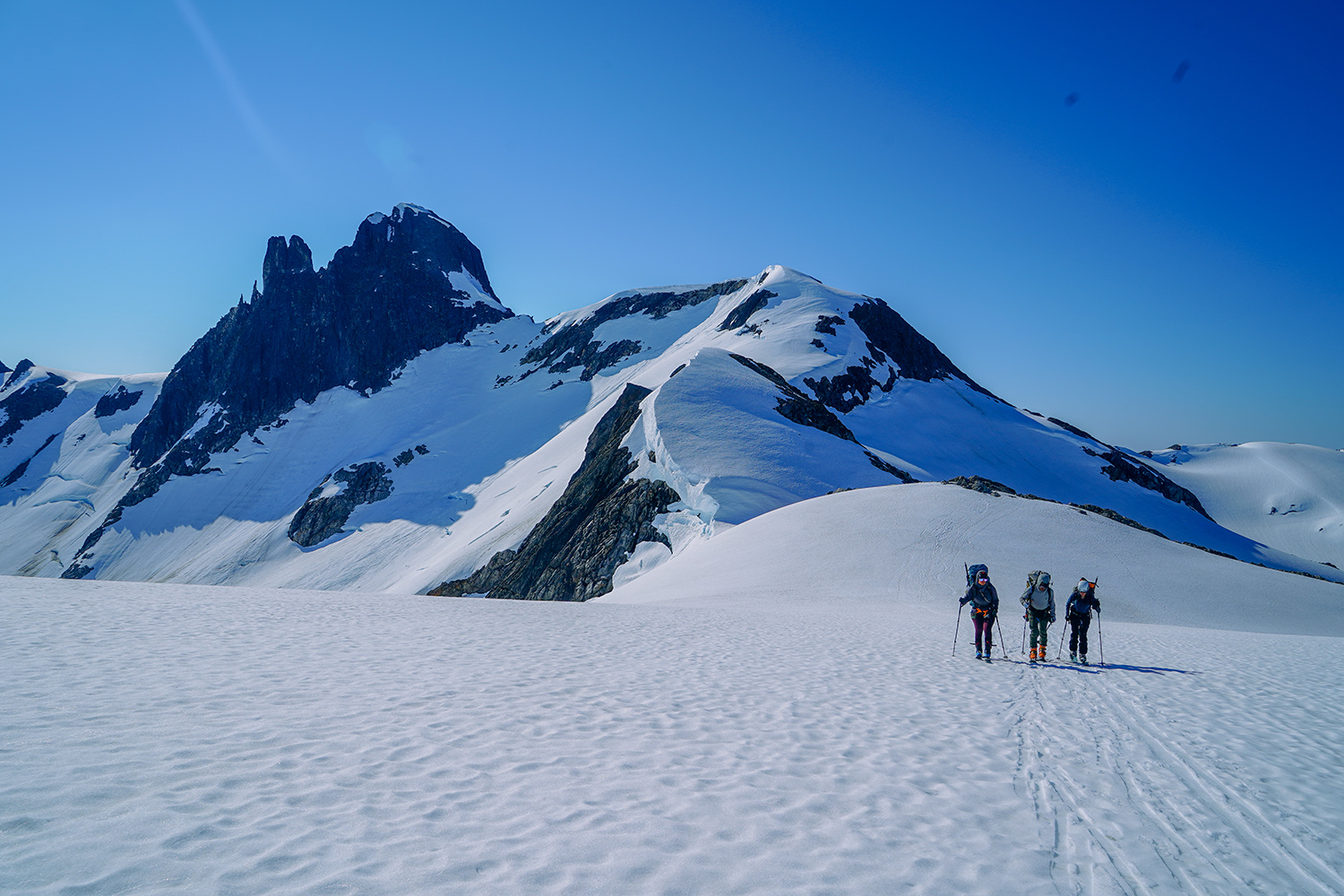
What did a typical day look like?
We all woke up at 7:30 a.m. and had breakfast made by three students who were chosen for that day. We would then go and do work detail, which is basically doing chores around the camp. So, cleaning up the houses or catching up on some research work that you have to do with faculty members. After work detail, there were usually a few different outing groups that go out for day trips. This wasn’t necessarily the actual traverse, but a little day trip out of the camp to go and do research or learn more about glacier safety. If we weren’t going to be around for lunch, we also made our own food.
For people who wanted to stay in camp for that day, they’d sit in on lectures with faculty. They’d learn about climate science, polar science, and more. Really cool topics.
By the end of the day, everyone was back for dinner, so we all ate together. And then after dinner time, we usually had a single, big lecture that everyone went to. Then it was usually lights out.
You also produced a documentary during your trip. Can you tell us about that?
While I was on the icefield, I ended up filming a documentary that I’m now editing. It’s going to be about JIRP and the experience that I had up there. I plan on having it premiere on the JIRP website. I’m also going to be submitting it to a few film festivals and may show it at the Student Union.
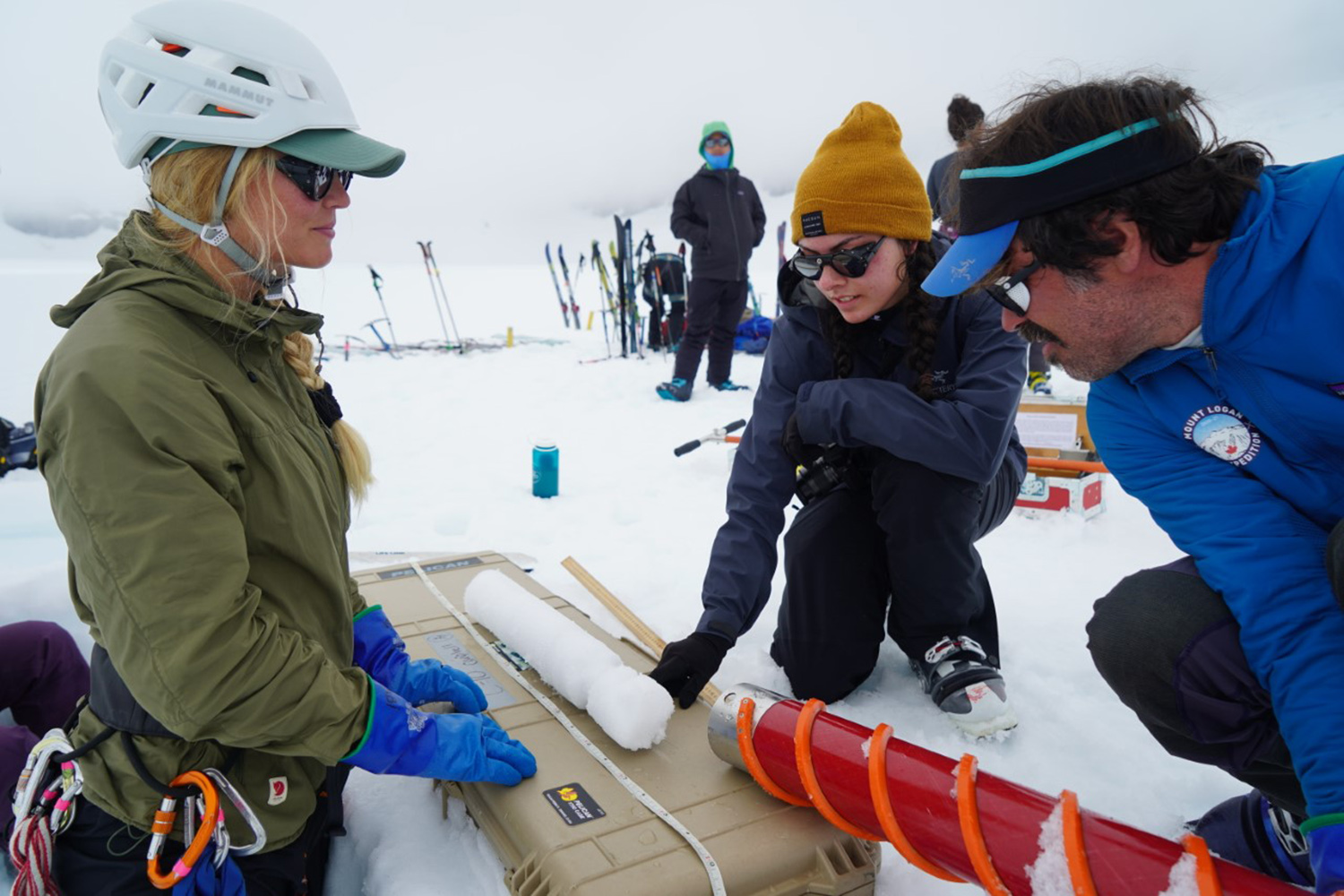
What advice would you give to students looking to get involved in research, internships, etc.?
Do what makes you excited. And if you don’t know what makes you excited, take a few hours or a few days to look into some hobbies or look at movies or read books that interest you, and try to find out what that is. You’ll be surprised at how many opportunities there are. It’s going to take some digging around. It’s going to take some trial and error.
What are your plans for after graduation?
I plan on going to grad school, but I think I’m going to take a gap year first. I would like to travel and possibly work with the U.S. Antarctic Program at a research station in Antarctica. They offer opportunities for people right out of undergrad either as research assistants or as support staff. I have also looked at applying to a Fulbright in Norway and Svalbard because I know that they have lots of opportunities up there for people in this field.
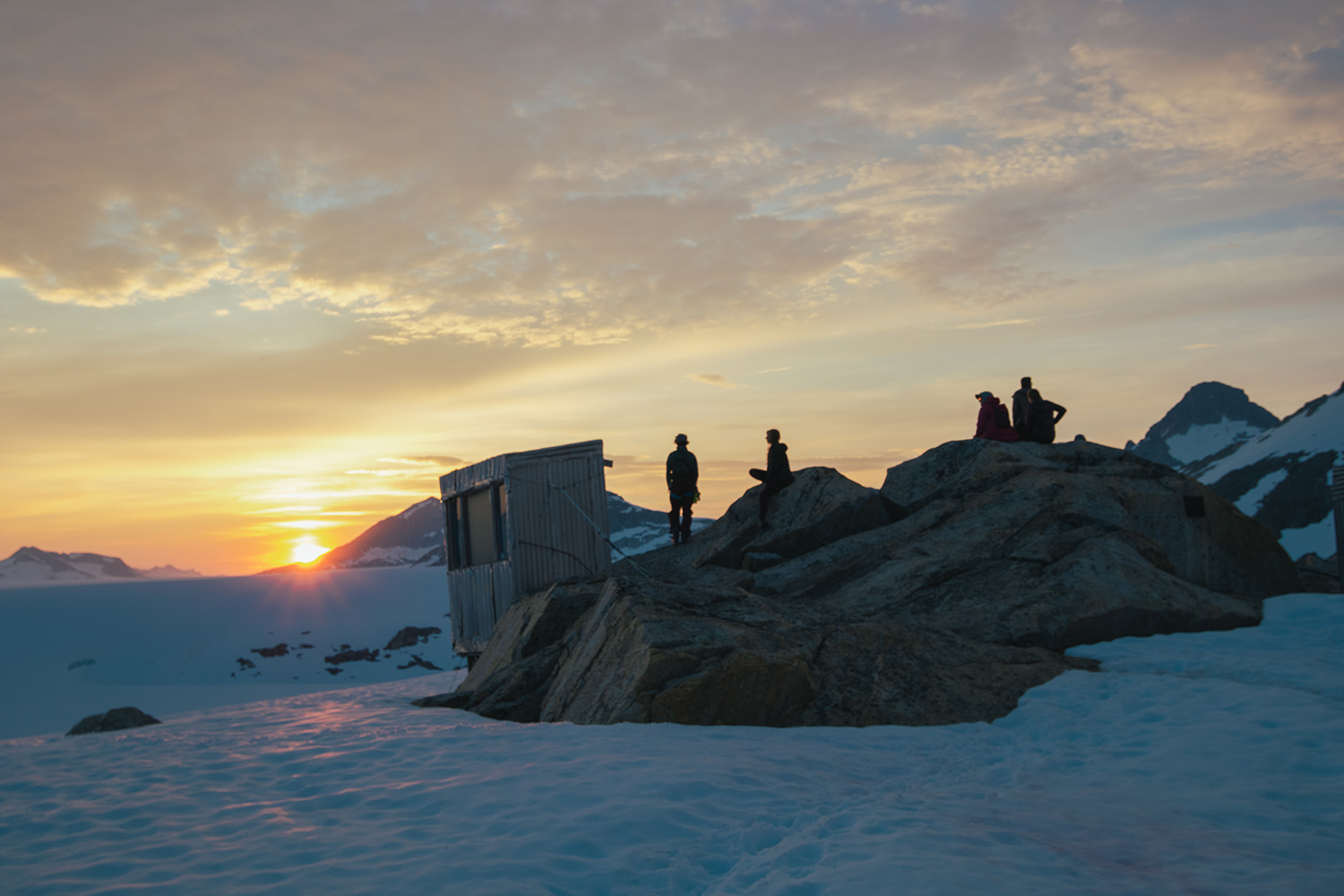
Why are hands-on opportunities important?
You’re applying what you learned in the classroom to a much more serious environment. The stakes are higher when you’re out in the field. You learn a lot more not just about the academics, but about yourself.
